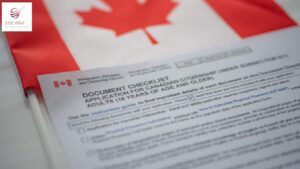
If you’re planning to visit Canada for a short period, understanding the essentials of the Temporary Resident Visa (TRV) is crucial. Whether you’re traveling for tourism, business, or to visit family and friends, here’s a comprehensive guide to help you navigate the TRV process:
1. What is a TRV?
A Temporary Resident Visa (TRV) is an official document issued by the Canadian government that allows foreign nationals to enter Canada for a temporary stay. It’s commonly required for visitors from countries that are not visa-exempt.
2. Who Needs a TRV?
Citizens of countries that are not visa-exempt for Canada need a TRV to enter the country. Visa-exempt countries include the United States, European Union member states, and a few others. Check the official Canadian government website to determine if your country requires a TRV.
3. Types of TRVs:
Single Entry TRV: Allows one entry into Canada during the specified period. After leaving Canada, you would need a new TRV to re-enter.
Multiple Entry TRV: Permits multiple entries into Canada during the validity period, typically up to 10 years. This is convenient for those who need to travel in and out of Canada frequently.
4. Application Process:
Obtain the application package from the official website of Immigration, Refugees and Citizenship Canada (IRCC).
Complete the application form, paying close attention to accuracy and honesty.
Pay the required processing fee.
Gather supporting documents, including proof of ties to your home country (employment, family, property), travel itinerary, and valid passport.
Submit your application online or at a Visa Application Center (VAC) if required by your country.
5. Processing Time:
Processing times can vary depending on factors such as your home country and the volume of applications. It’s advisable to apply well in advance of your travel date.
6. Biometrics:
Some applicants are required to provide biometric information (fingerprints and photo) as part of the application process. Check if this applies to you and follow the guidelines provided.
7. Medical Examination and Insurance:
While a medical examination is not usually required for a short visit, it’s a good idea to have travel insurance to cover any unexpected medical expenses during your stay in Canada.
8. Port of Entry:
Upon arrival in Canada, you will be subject to inspection by Canadian Border Services Agency (CBSA) officers. Ensure you have all necessary documents with you, including your passport, TRV, and any supporting materials.
9. Length of Stay:
The duration of your stay will be determined by the CBSA officer at the port of entry. It’s important to respect this duration and not overstay your authorized period.
10. Extending Your Stay:
If you wish to extend your stay in Canada, you must apply for an extension before your current status expires. An extension is not guaranteed, so apply well in advance.
Navigating the process of obtaining a Temporary Resident Visa for your visit to Canada may seem complex, but with careful preparation and attention to detail, you can make the experience smoother. Always refer to the official IRCC website for the most up-to-date information and guidelines.





